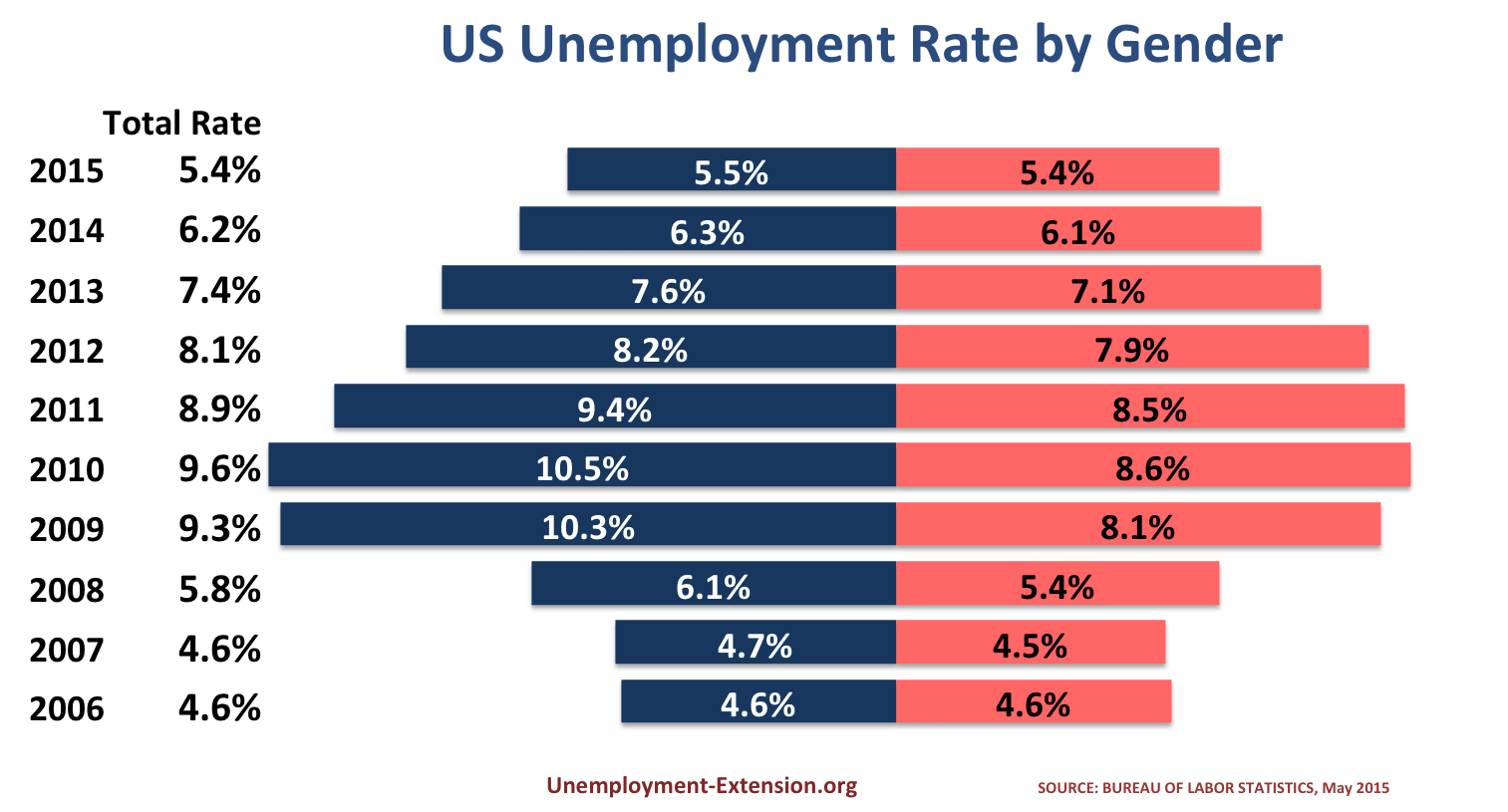Unemployment and the Gender Gap: 5 Things You Should Know
By Unemployment-Extension.org | May 25, 2015 at 8:50 PM |
According to the Pew Research Center, roughly 47% of the U.S. labor force is comprised of women, up from 43% in 1980.

Regardless of the evidence that women are now roughly half of the labor force, inequalities persist. The pay gap between men and woman in a year is a staggering $11,500, and women earn 77 cents for every dollar a man earns.
While 53% of entry-level employees at Fortune 500 companies are women, less than 17% of corporate board jobs are held by women and less than 15% of executive officer positions at these firms were occupied by women as of 2013. Gaps in Unemployment only further highlight gender disparities in the workforce. Here is some statistics.
Unemployed women stay unemployed longer than their male peers. Research shows that when women find themselves unemployed, they tend to stay unemployed longer. Wells Fargo's John Silvia estimated that some 25% of all women who find themselves unemployed would exit the workforce.

While the recession hit men harder than women, men were able to gain back jobs lost at a much faster rate than women. The female unemployment rate dropped from 7.6% at the start of the recovery to 6.5% in July 2013, while the male unemployment rate fell from 9.9% to 7%.
Women are more likely to find themselves trapped in low-wage jobs than men. 72% of all cashier jobs are held by women while 71% of all waitressing jobs and 60% of all bartending jobs are held by women. This can make career progression more difficult and can make women more vulnerable to unemployment.
Mississippi is the worst state to be a working lady. The study found that Mississippi has the highest percentage of women living in poverty than any other state and the worst access to health care of all 50 states. It came in second to last in terms of social and economic opportunities, beating only Louisiana.
Access to childcare can affect women’s participation the workforce and their earnings. Access to childcare can significantly affect a woman’s access to employment. If quality, affordable childcare can be found, it is hard to find.
"Because a high percentage of women are in the workforce, the biggest challenge is affordable and good quality childcare," explained Dr. Candida G. Brush, a professor of entrepreneurship at Babson College. "For many women, especially if they are single parents, the cost of reliable, safe child care minimizes their net earnings,†she added.
The unemployment rate is 8.1% for adult Hispanic women, and 10.6% for adult African-American women, compared with 5.7% for American women overall. It isn’t just gender that affects unemployment; it is also race. African-American and Hispanic women consistently fare worse than their white peers in terms of unemployment.
Researchers have suggested that African-Americans are especially vulnerable to unemployment as they are concentrated in service and government sectors, which are especially prone to layoffs. The wage gap is also much more pronounced with African-American and Hispanic women. African-American women are paid 66 cents per every dollar men earn while Hispanic women are paid 58 cents per every dollar men earn.
Other Unemployment News
What You Need to Know about the Hidden Recession
How Would Presidential Hopefuls Reduce Unemployment?
More News
